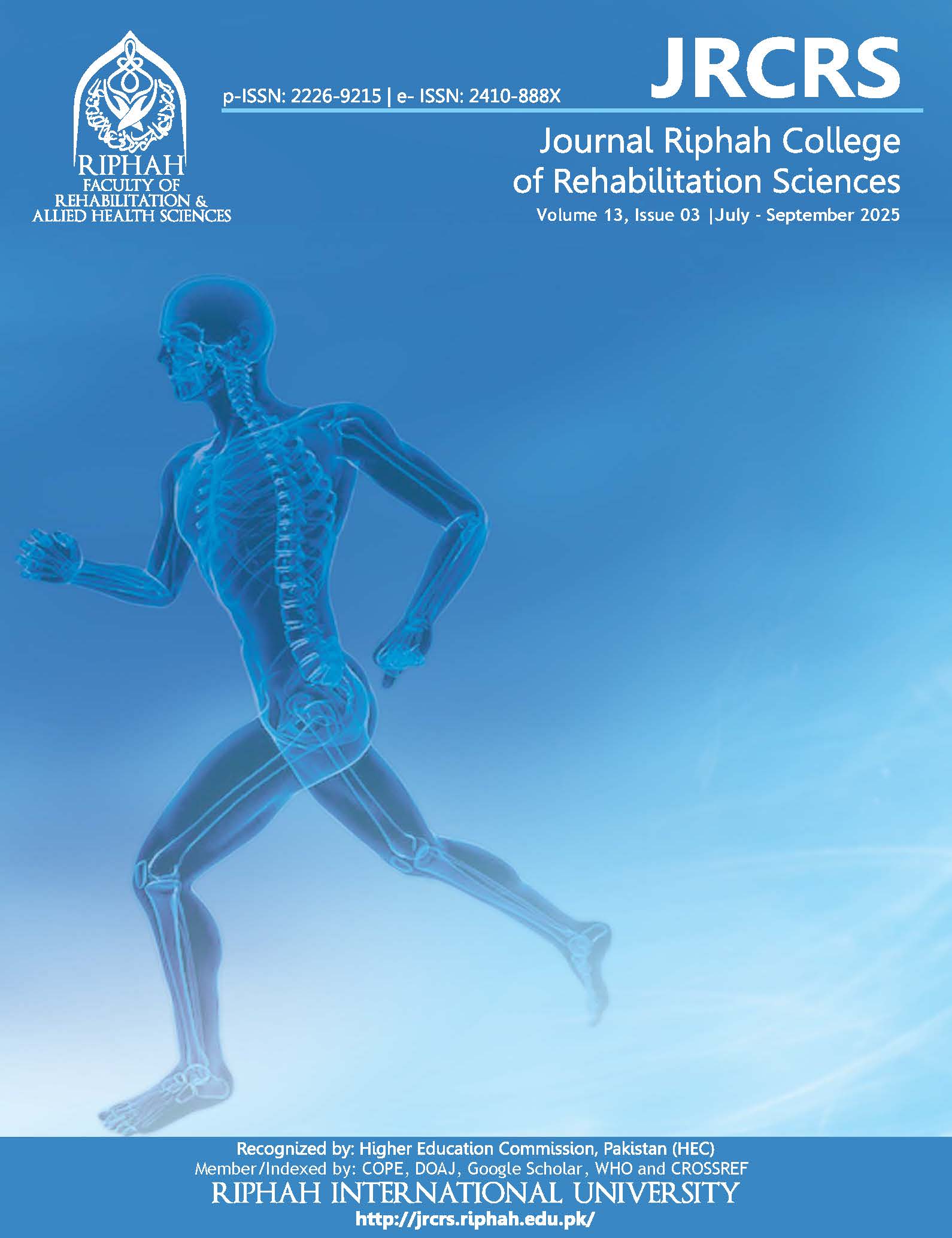Association between Smartphone Screen Time and Cervicogenic Headache Severity in Young Adults, a Cervical Flexion-Rotation Test-Based: A Cross-Sectional Study
Abstract
Abstract:
Background: With increased use of smartphones, extended screen time is associated with musculoskeletal disorders such as cervicogenic headaches. Poor postures and forward head posture can cause cervical spine dysfunction and result in headache. Young adults, especially students, are highly susceptible because of overuse of smartphones. The prevalence and severity of cervicogenic headaches in this population need to be identified for early treatment and prevention.
Objective: To determine the association between smartphone screen time and cervicogenic headache severity in young adults.
Methodology: This cross-sectional study was conducted on Doctor of Physical Therapy (DPT) students (n=175) using a non-probability convenience sampling technique. Participants included both male and female DPT students aged 18–25 years with more than three hours of daily smartphone screen time, while individuals with systemic diseases, whiplash injuries, psychiatric illnesses, or a history of cervical spine tumors were excluded. Cervicogenic headache severity was assessed using the Numeric Pain Rating Scale (NPRS), and cervical spine dysfunction was evaluated through the Cervical Flexion-Rotation Test (FRT).
Results: Of the 175 participants, 137 tested positive and 39 tested negatives on the Flexion Rotation Test (FRT). According to the NPRS (Numeric Pain Rating Scale), 35.4% of participants reported mild pain, 55.4% had moderate pain, and 9.1% experienced severe pain. Screen time and Cervicogenic Headache CGH pain severity were statistically significantly correlated, with a chi-square test value of 63.742 and a p-value of <0.001.
Conclusion: The majority of students experienced cervicogenic headaches associated with excessive smartphone use. Moreover, a statistically significant association was found between increased screen time and higher cervicogenic headache severity (χ² = 63.742, p <0.001), indicating that prolonged smartphone use may contribute to increased headache intensity in young adults.
Keywords: Cervicogenic Headache, Smartphone Addiction, Screen Time, Young Adult
Downloads
Published
How to Cite
Issue
Section
License
Copyright (c) 2025 All Articles are made available under a Creative Commons "Attribution-NonCommercial 4.0 International" license. (https://creativecommons.org/licenses/by-nc/4.0/). Copyrights on any open access article published by Journal Riphah college of Rehabilitation Science (JRCRS) are retained by the author(s). Authors retain the rights of free downloading/unlimited e-print of full text and sharing/disseminating the article without any restriction, by any means; provided the article is correctly cited. JRCRS does not allow commercial use of the articles published. All articles published represent the view of the authors and do not reflect the official policy of JRCRS.

This work is licensed under a Creative Commons Attribution-NonCommercial 4.0 International License.







